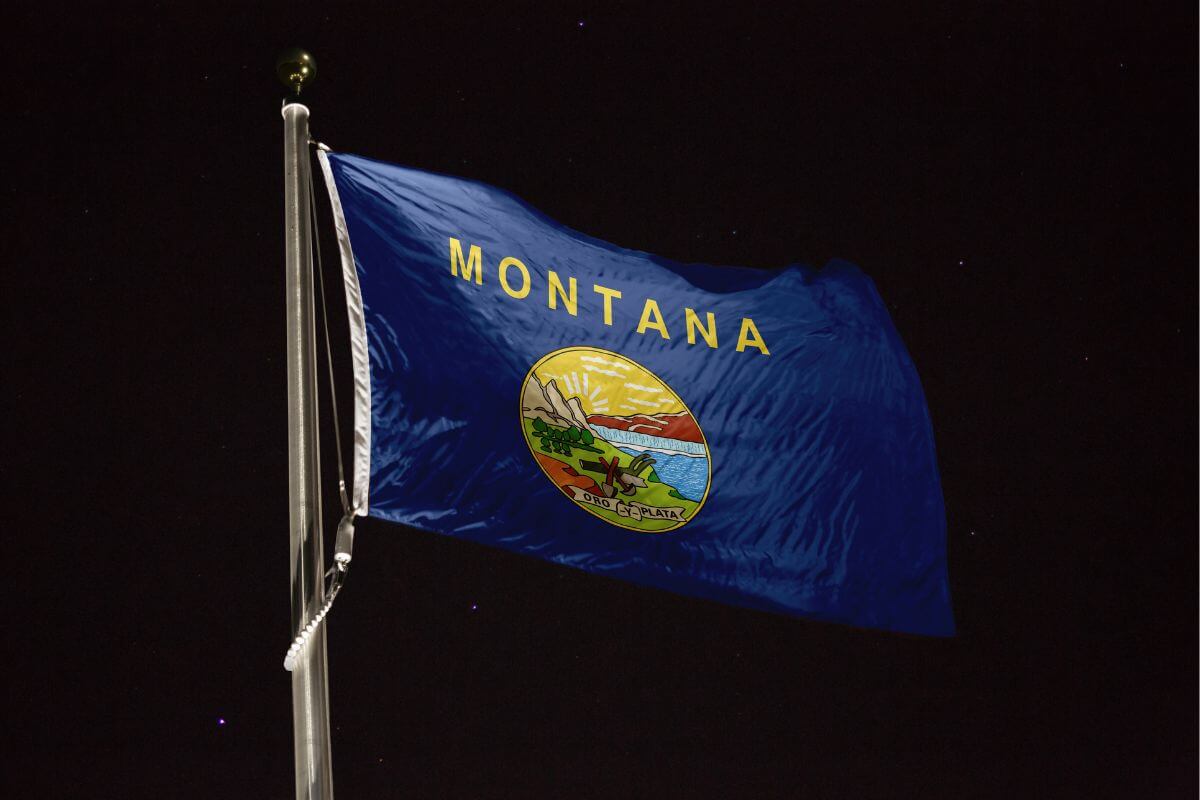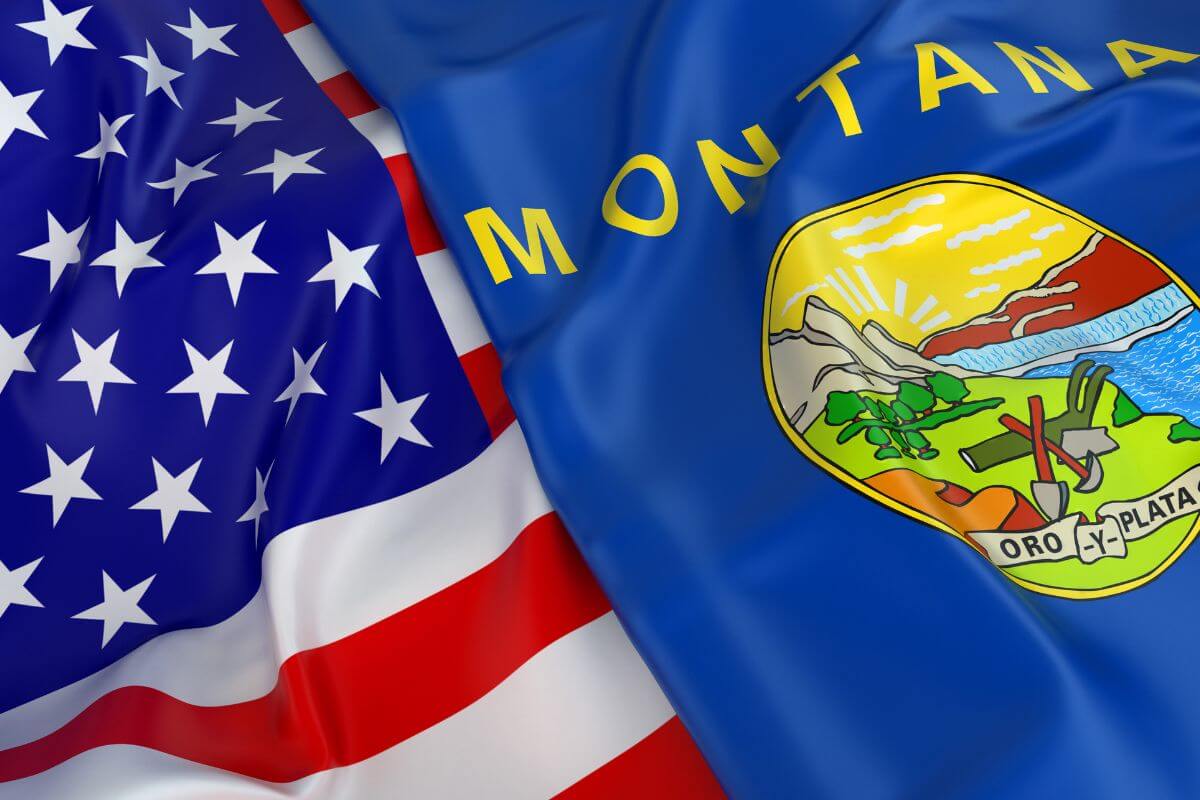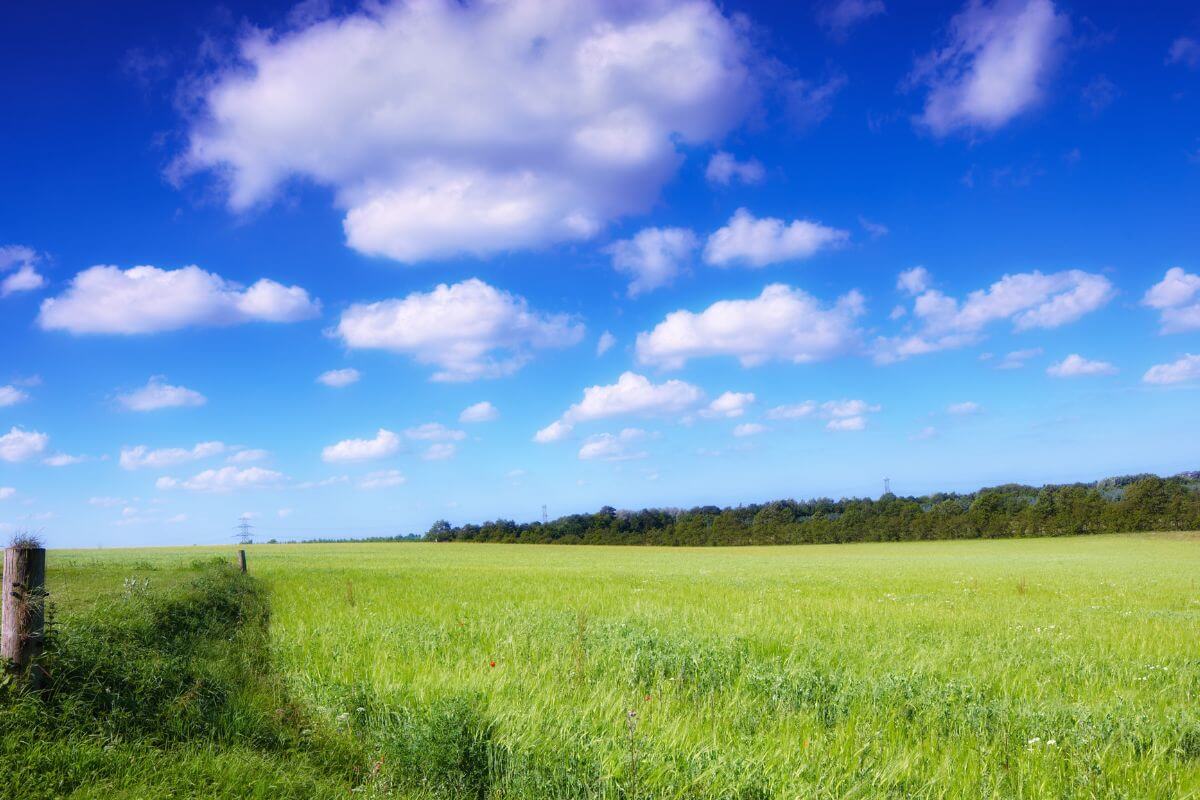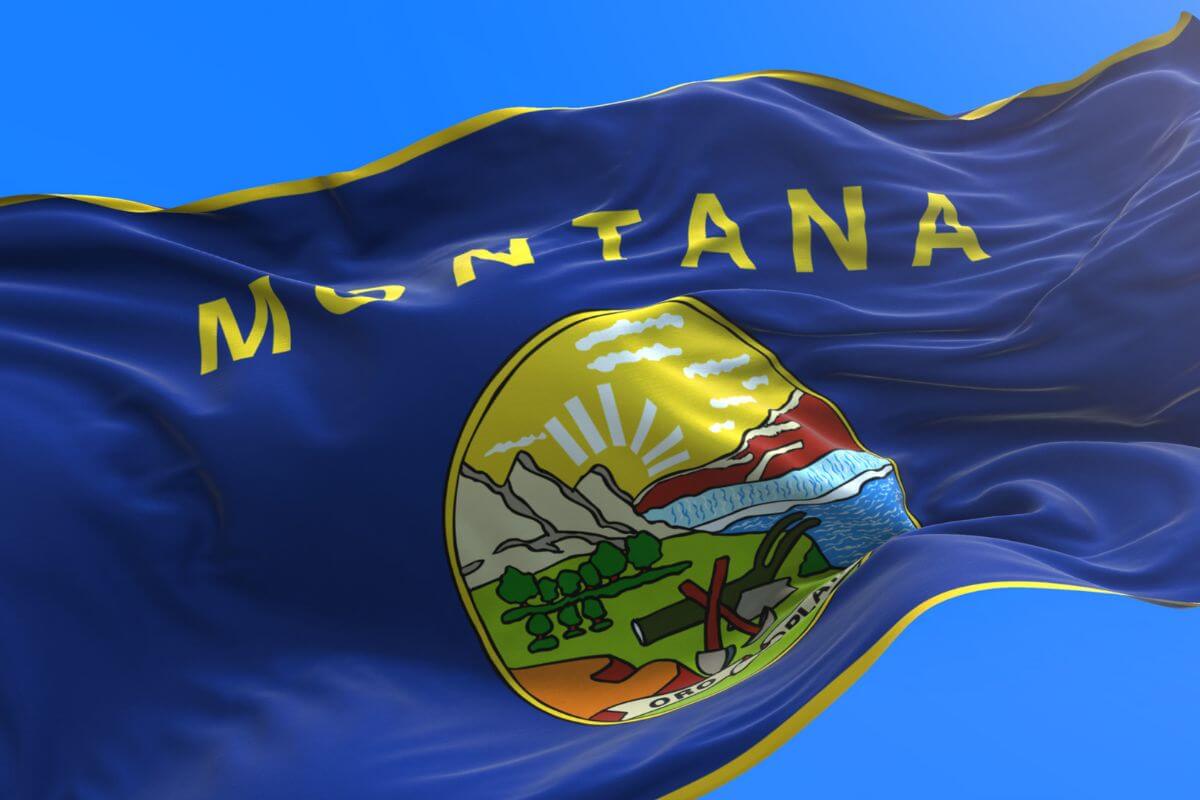As I stand amidst the breathtaking beauty of Montana, it’s hard not to be captivated by the majesty of this land.
The towering mountains, beautiful scenery, pristine lakes, and vast open plains create a picturesque backdrop that is unrivaled.
But it’s not just the stunning scenery that makes Montana special; it’s also the rich history and unique traditions that are woven into its very fabric.
Today, I am thrilled to unveil the fascinating story behind Montana’s state colors.
This is a tale of pride and honor, of a state that holds its heritage close to its heart.
- Related article: Montana’s Various State Symbols
So, pack your bags, open your minds, and let your imagination run wild as we delve into the vibrant tapestry of Montana’s state colors.
Montana Colors Historical Significance

Montana’s state colors, an intriguing topic indeed.
This tale takes us back to a time when the pioneers ventured into the wild, untamed wilderness, seeking a new beginning.
The colors that adorn Montana’s state flag are not mere aesthetics; they hold a deeper historical significance.
Let’s start with the bold letters of gold color that grace the flag.
These letters, meticulously embroidered onto a dark field of blue, symbolize the golden promise that drew people to this land.
Montana’s rich mineral resources, like the shimmering gold, helped shape its identity and brought prosperity to its people.
As we delve further into the flag’s story, we encounter the three-inch golden fringe.
This fringe, reminiscent of the golden wheat fields that once stretched across the Montana plains, symbolizes the state’s enduring connection to its farming heritage.
The fringe serves as a reminder of the pioneers who toiled the land, their perseverance etched in every golden strand.
The Montana state flag itself holds a special place in the state’s history.
The state flag was first adopted in 1905, a time when Montana was still finding its footing as a new state.
The flag’s design was inspired by the 45-star U.S. flag, representing Montana’s entry into the United States as the 41st state.
So, as you gaze upon Montana’s flag, let these colors transport you back to a time of bravery and resilience, of pioneers and farmers, all woven together in this vibrant tapestry of history.
Montana State Flag

Oh yes, the story of Montana’s official flag. This emblem, woven with threads of history, represents the spirit and essence of this rugged land.
The flag’s design, a masterpiece in its own right, features the state seal set upon a field of deep blue.
It’s as if the flag itself is a canvas, a vessel for Montana’s compelling narrative.
And what adds a touch of allure to this flag is the golden fringe that delicately adorns its upper and lower borders, a nod to the treasures that lie within.
Now, let’s dive deeper into the palette of this artistic marvel.
The primary colors that dance upon this flag are the hues of the majestic Montana landscape.
Imagine the snowy mountains, rising tall and proud, painted crisp and white against the cerulean sky. Picture the tumbling waterfalls, shimmering silver as they cascade down rocky cliffs.
And don’t forget the mining and farming tools, gilded in gold, representing the rich resources and enduring spirit of this wild frontier.
So, my fellow explorer, let Montana’s official state flag guide you through a tapestry of stories.
Feel the weight of its historical significance, and marvel at the deep blue field that mirrors the boundless horizons of this enchanting state.
Let the golden fringe whisper tales of adventure and triumph, as it frames a symbol of Montana’s past and a promise of its future.
Montana State Symbols Primary Colors

Let’s embark on a chromatic journey into the vibrant palette of Montana’s state symbols, shall we?
Of course, the color that steals the spotlight is a rich and deep blue.
This rich and deep blue hue, as vast as the Big Sky Country itself, represents the expansive heavens that stretch above Montana’s breathtaking landscapes.
The rich and deep blue color symbolizes the limitless possibilities and boundless horizons that this remarkable state holds.
Next, we encounter the golden touch of yellow.
Like rays of sunshine dancing on the towering peaks, this radiant hue embodies the resilience and optimism of Montana’s people.
The golden touch of yellow hue mirrors the golden fields that sway in the gentle breeze, a testament to the agricultural heritage that sustains this land.
But let us not forget the fiery passion of red.
This passionate color, flickering like the flames of a campfire, pays homage to Montana’s pioneering spirit.
The color red signifies the valor and courage of those who have carved a path through untamed wilderness and conquered formidable challenges in Montana.
And as we continue our exploration, we encounter the warm embrace of beige.
This neutral hue, reminiscent of the sun-kissed plains and rugged canyons, represents the untamed beauty of Montana’s natural wonders.
The color beige in Montana’s state colors speaks of harmony and balance, perfectly encapsulating the delicate equilibrium between mankind and nature.
And finally, the lush green that envelops Montana, like a quilt of emerald, whispers tales of serenity and abundance.
The color green signifies the vibrancy of the wilderness and the vitality of Montana’s flora and fauna. It is also a reminder that in this vast expanse of nature’s palette, life thrives in abundance.
These primary colors, cascading across Montana’s state symbols, paint a vivid picture of the land’s enchanting allure.
They capture the essence of this wild frontier, stirring emotions and igniting the imagination.
Montana Colors and Gold Fringe History

Let’s transport ourselves to a time when these symbols of statehood were first embraced.
The Montana state flag, donning a bold blue field with a golden fringe, has been an emblem of pride and honor since its adoption on February 19, 1905.
It was William A. Kennedy, a visionary member of the Montana House of Representatives, who proposed the addition of the gold fringe to the flag.
His belief was that this radiant adornment would bestow an air of regality and reverence upon the flag, elevating it to even greater heights of magnificence.
The mesmerizing blue that graces the flag serves as a majestic tribute to Montana’s expansive skies and majestic mountains.
With every glance, one can sense the vastness of this incredible state and the boundless possibilities that lie within its borders.
Glimpses of the golden hue woven into the fabric of Montana’s flag reflect the state’s abundant mineral wealth.
Like hidden treasures waiting to be discovered, this color symbolizes the riches that lie beneath Montana’s rugged terrain.
Innocent white letters embellish the flag, serving as a reminder of the pure air and crystal-clear waters that define Montana’s pristine natural beauty.
The embellishments stand as a testament to the state’s commitment to preservation and conservation, preserving the wild wonders that make Montana truly unique.
Before the adoption of the official flag, there was another symbol that captured the hearts of Montanans.
Colonel Kessler’s flag for the First Montana Infantry gained unofficial recognition as a symbol of the state.
Inspired by this hallowed banner, the adoption of the Montana state flag in 1905 ensured that the spirit of the regimental colors would forever be entwined with the proud history of this remarkable state.
Montana’s regimental colors and the shimmering gold fringe that adorns its flag are not just visual elements; they are a reflection of the state’s indomitable spirit, its awe-inspiring landscapes, its untamed beauty, and its boundless potential.
Montana State University Colors

I absolutely adore the Montana State University tradition known as Blue and Gold Fridays.
It’s a true testament to the vibrant spirit and unwavering pride that runs deep in the veins of this incredible state.
Every Friday, the campus and community of Montana State University come together, donning the iconic colors of blue and gold, to celebrate the essence of what it means to be a Montanan.
The significance of these colors cannot be overstated.
Montana’s signature blue skies and the golden sun that shines upon its vast landscape are beautifully represented in blue and gold hues.
When I see these colors, it’s as if I can feel the warmth of the sun and the wide-open expanse of the Big Sky State.
But Blue and Gold Fridays are about more than just showing off our fashionable side.
This tradition serves as a rallying point for our beloved university’s athletic teams and showcases the unwavering support we have for our student-athletes.
The Blue and Gold Fridays tradition is a powerful reminder of the strength and camaraderie that comes from being part of a team, both on and off the field for Montana State University.
Not only do these colors evoke a sense of state pride, but they are also a visual representation of the pride that the students have for the university.
The iconic blue and gold can be seen waving proudly during sporting events and other institutional activities, uniting us in a shared sense of belonging and community.
So, if you happen to find yourself in Montana on a Friday, make sure to join in on the festivities of Blue and Gold Fridays.
And let the colors of Montana remind you of the profound beauty and sense of belonging that this incredible state has to offer.
Unveiling Montana’s State Colors Final Thoughts

It is known that the meaning of Montana’s state colors goes beyond being a reflection of Montana’s natural beauty and historical background.
The state colors and hues are not just a representation of the state’s physical landscape, but also a symbol of its cultural identity.
The blue and gold colors, with their vibrant energy, perfectly capture the essence of Montana’s breathtaking scenery.
The vivid blue evokes images of the big, open skies that stretch endlessly over rolling plains, while the golden hue mirrors the warm sun that bathes the land in its radiant glow.
It’s as if these colors have the power to transport me to the majestic mountains, cascading waterfalls, and serene valleys that define this remarkable state.
Beyond their natural beauty, the blue and gold colors also carry a sense of history and pride.
They harken back to Montana’s rich heritage, from the time of the 1st Montana Infantry to the present day.
As I imagine the handmade silk flags and embroidered replicas waving proudly in the wind, it’s clear that these colors are not just a part of Montana’s past, but a vibrant testament to its present and future.
In many ways, the blue and gold colors embody the spirit of Montana itself – bold, resilient, and awe-inspiring.
The blue and gold colors serve as a reminder of the unity and camaraderie that binds us together as a community, and they symbolize the unwavering support we have for our beloved state and university.
Montana’s state colors, with their significance, natural beauty, historical background, and cultural identity, are a visual representation of everything that makes this state truly remarkable.
They evoke a sense of wonder, pride, and belonging, reminding us of the breathtaking beauty that surrounds us and the vibrant spirit that flows through our veins.
Unveiling Montana’s State Colors FAQs
1. What Colors Represent Montana?
For the enchanting land of Montana, the colors that represent its essence are none other than striking blue and gold.
These hues hold a profound significance, intertwining the state’s natural beauty, farming history, and pioneering spirit into a vibrant tapestry that sets Montana apart.
2. What Is the Meaning Behind Montana’s Flag Colors?
Montana’s official state flag features vibrant blue for its natural beauty and snowy peaks, golden yellow to honor pioneers’ resilience during mining, and a touch of red to represent the hard work and sacrifice of those who tamed the land and cultivated it during its farming history.
3. What Color Is Montana Blue?
Ah, Montana blue, a hue that captures the essence of the great Treasure State.
Montana blue symbolizes the state’s natural beauty, from its vast skies to its majestic mountains, inviting exploration into a wild and untamed realm of awe-inspiring scenery.
Learn more about the magnificent state of Montana by giving these other articles a read:

